ASUS ROG Zephyrus G16 (2024) Review: Balancing Performance and Portability
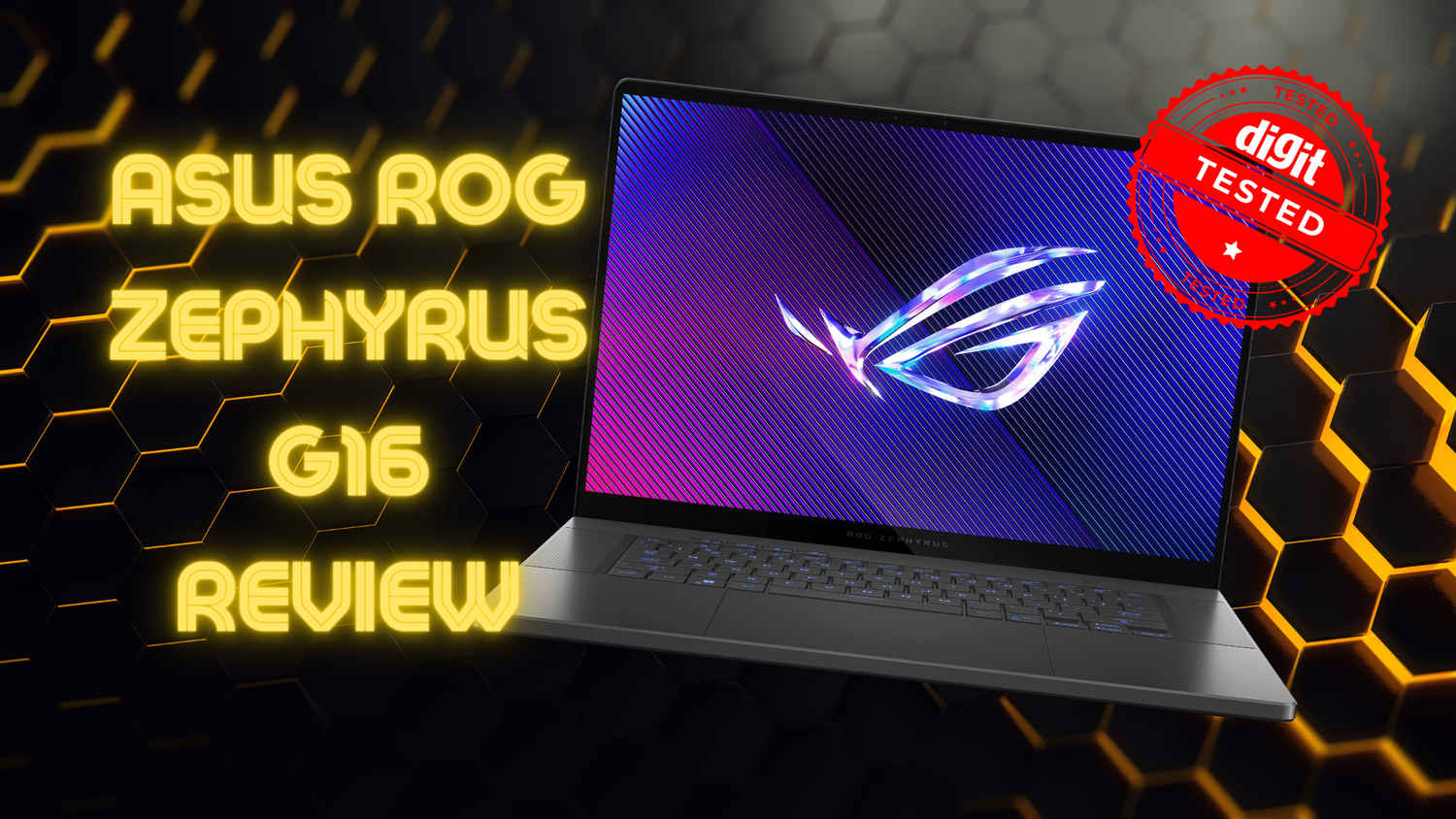
There’s no denying the premium build quality and excellent craftsmanship of the ASUS ROG Zephyrus G16. It has a stunning OLED display and a good selection of ports, all of which are packaged nicely into a super slim and lightweight 16-inch chassis. It’s even more impressive if you consider that it comes with heavy-duty hardware like the Core Ultra 9 and an RTX 4090. Unfortunately, it does come with its own set of flaws. The laptop cannot compete with beefier alternatives in the market when it comes to performance; cheaper laptops with GPUs a tier lower outperform the max-Q RTX 4090 on the Zephyrus G16. The new Meteor-Lake processor also doesn’t seem to offer improved performance over its predecessors. Additionally, the laptop comes with 32 GB of RAM, which is plenty, but it’s soldered on, so there’s no way to increase it in the future. There’s also the issue of high surface temperatures which is fairly common in such thin and light form factor laptops.
While the Zephyrus G16 doesn’t go all-in on performance, it is still a great hybrid option that’s a good mix of performance and portability with a stunning OLED display to boot.
ASUS ROG is a brand that normally screams gaming, but one look at the new 2024 ASUS ROG Zephyrus G16 will tell you that it’s a bit of a departure from ASUS’s conventional gaming aesthetic. For that matter, it’s a departure from previous Zephyrus models as well. With the new Zephyrus G16, ASUS is hoping to target the larger non-gaming audience, and hoping to pull in not just the gamers, but also content creators who are looking for powerful and compact laptops.
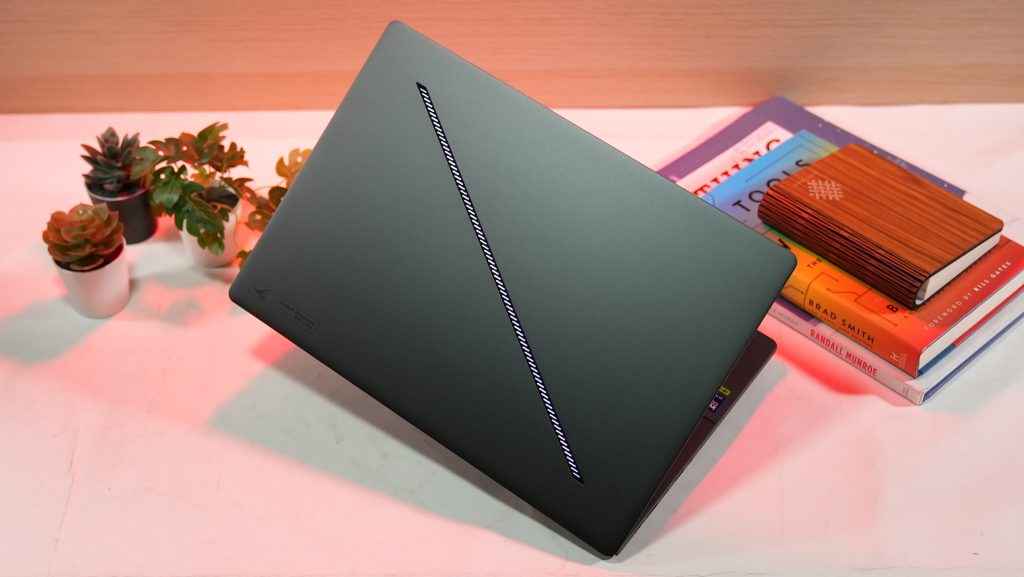
The model we’re reviewing, which is the ASUS ROG Zephyrus G16 GU605MY to be exact, is the most powerful configuration of the Zephyrus G16 that ASUS offers, featuring the latest top-of-the-line hardware from Intel and NVIDIA. We’re talking an Intel Core Ultra 9 185H processor paired with an NVIDIA RTX 4090 Laptop GPU. You also have Intel Core Ultra 7 variants, with GPU options going down to the RTX 4050. Despite the powerful hardware on board, the Zephyrus G16 is surprisingly thin and light. Read on to find out whether or not that affects how well the ASUS ROG Zephyrus G16 performs.
ASUS ROG Zephyrus G16 Specs at a glance
Processor: Intel Core Ultra 9 185H (16C / 22T)
GPU: NVIDIA GeForce RTX 4090 Laptop GPU
VRAM: 16 GB
TGP: 125W
RAM: 32 GB LPDDR5X-7467
Storage: 2x M.2 PCI 4.0 x4
Display: 16-inch, 16:10, OLED QHD+ 2560x1600p, 240 Hz
Price: INR 3,39,990
ASUS ROG Zephyrus G16 Build and Design
There’s no denying that the ROG Zephyrus G16 feels incredibly premium. The unibody aluminium chassis offers fantastic stability. There’s no flexing or creaking anywhere; even the keyboard doesn’t depress under pressure.
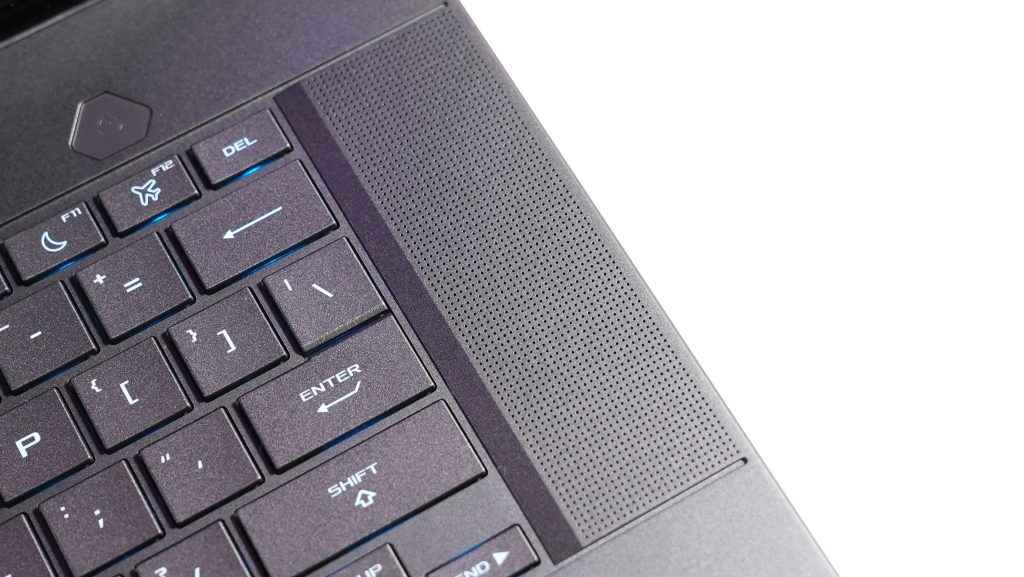
If you’re familiar with previous iterations of the Zephyrus, you’ll also notice that ASUS has done away with the dot-matrix display on the lid. Instead, you now have a single thin light strip running across the lid diagonally. This strip, which ASUS calls Slash Lighting, consists of 28 mini LEDs and 7 different zones. The Slash Lighting can be customised, and can even be programmed to light up when you want it to, like with notifications for example. We’re pretty on the fence about Slash Lighting, but it’s subjective. You can also turn it off entirely if you want. The Slash Lighting and the keyboard are the only two elements of the ROG Zephyrus G16 that are lit up, so it draws comparatively less attention than previous iterations of the Zephyrus.

The ROG Zephyrus G16 also features a new clamshell design which is supposed to help prevent hot air from blowing onto the display. However, this impedes the laptop’s maximum opening angle, which is now limited to 135 degrees. For context, previous Zephyrus models could be opened to 180 degrees.
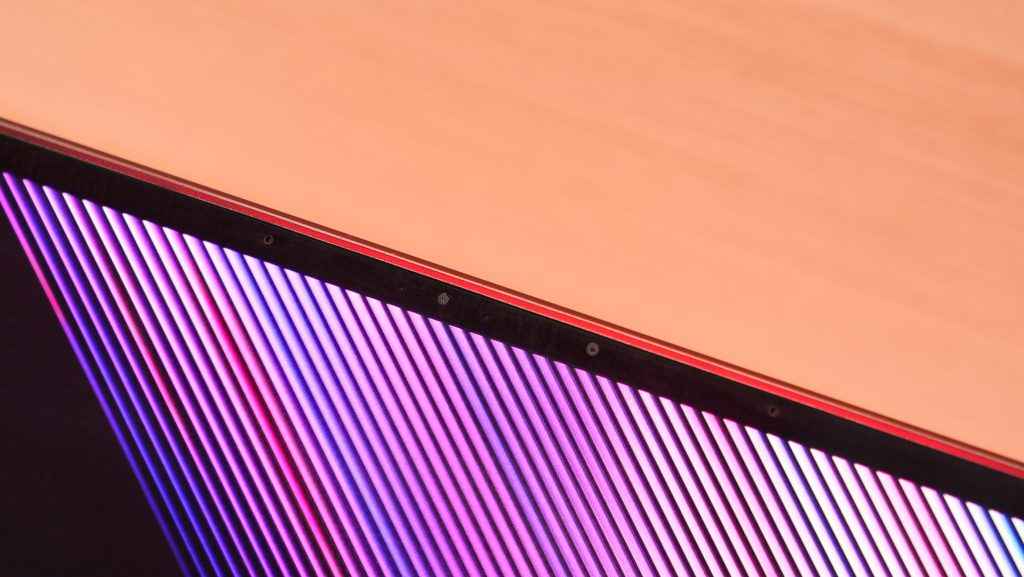
ASUS has managed to pack some serious hardware into what is one of the slimmest and lightest laptop models we’ve tested to date, within the segment of course. Looking at the laptop it’s easy to immediately draw comparisons to the likes of the MacBook Pro and even the Razer Blade 16. This variant of the ROG Zephyrus G16 weighs 1.95 kg and is 17.4 mm thick.
Keyboard and Touchpad
The Zephyrus G16 comes with a backlit keyboard and no numpad. While there’s ample space between keys, the single-line Enter Key and the tiny arrow keys can take some getting used to. Once you get used to the layout, the experience is very comfortable. The 1.7 mm travel distance feels good to type on and the keys are also silent.
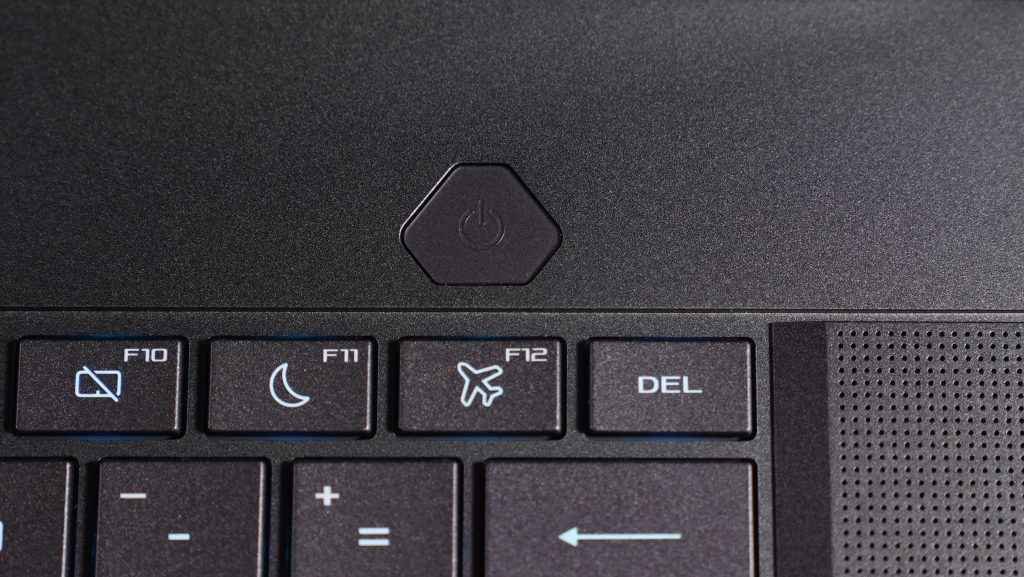
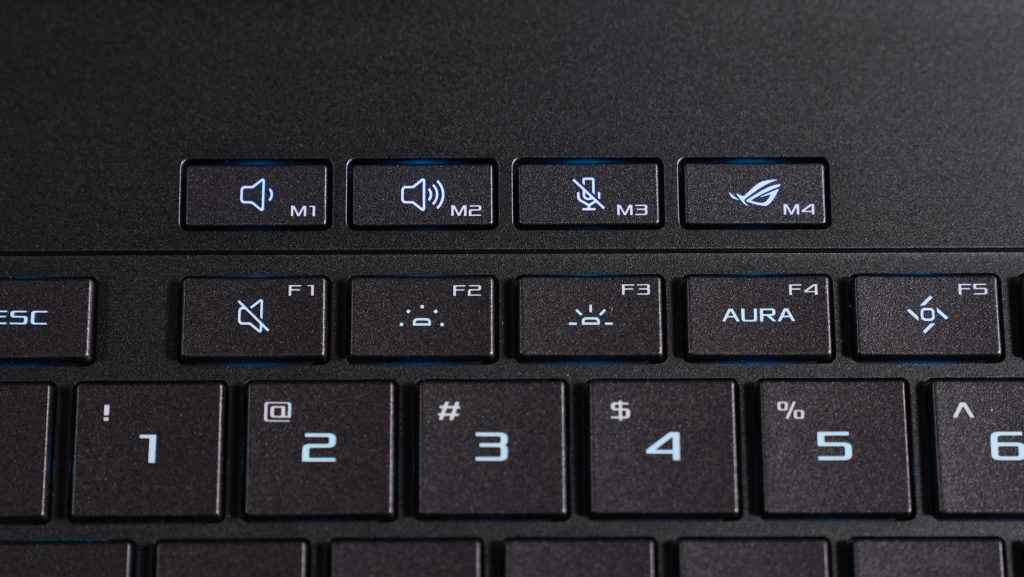
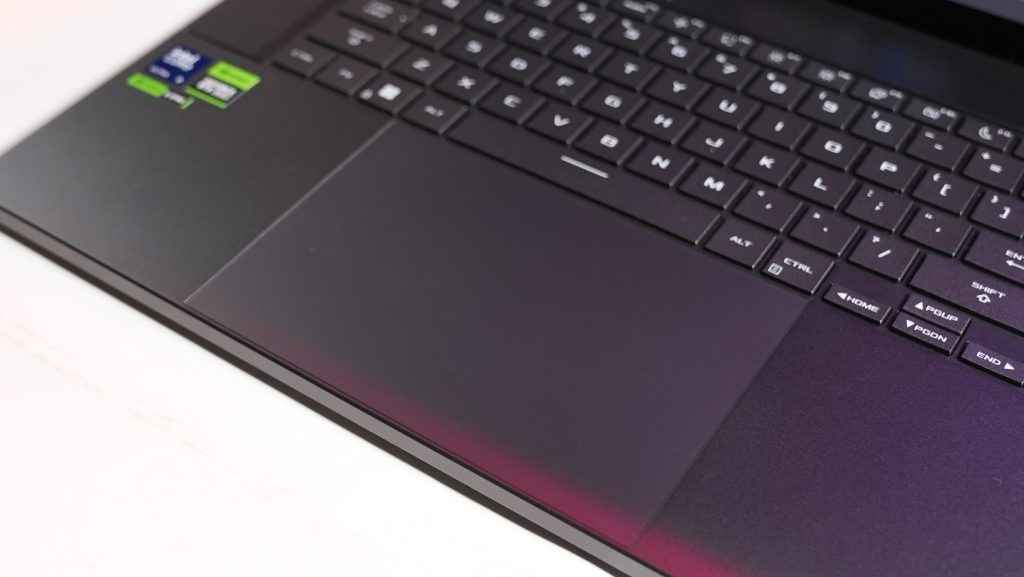

The touchpad on this laptop is massive. At 15 x 9.9 cm it’s way larger than any of the previous Zephyrus touchpads. The surface is smooth and it has a nice click as well. It feels as premium as the rest of the laptop.
I/O ports
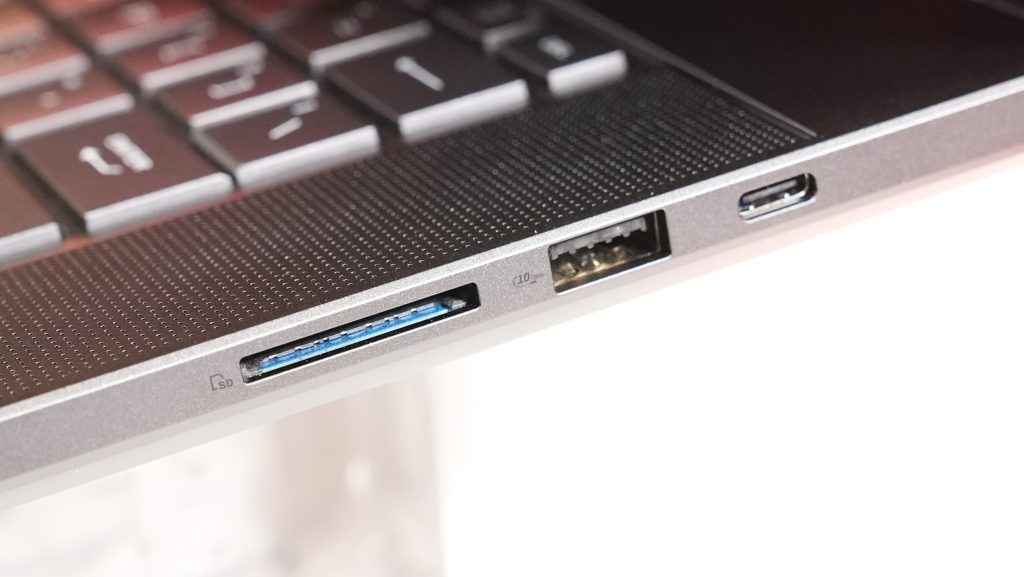
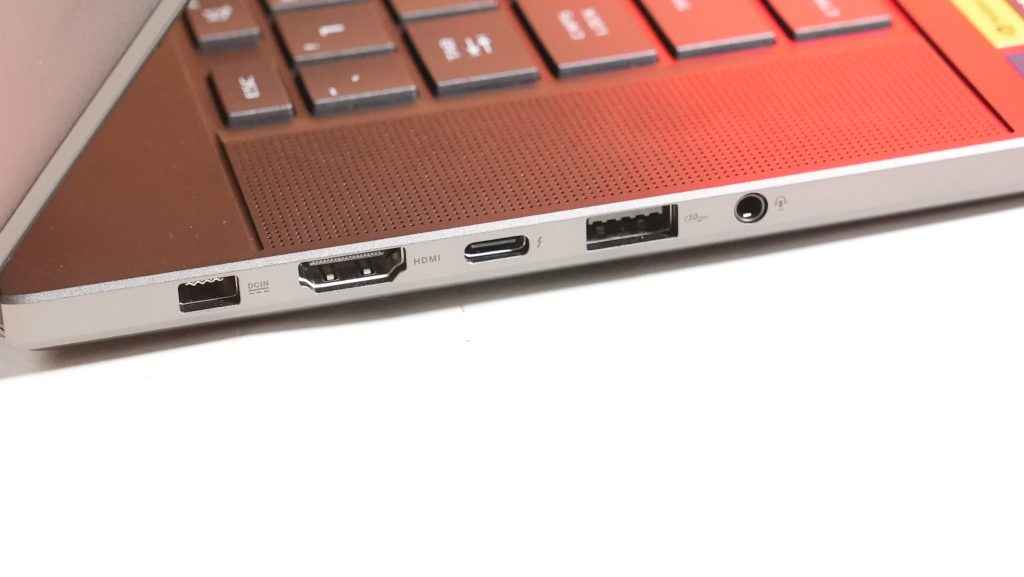
Because of the clamshell design we mentioned earlier, there’s no room on the rear for ports. Another departure from previous iterations of the Zephyrus. This means that all ports are on the laptop’s left or right side. On the left side of the laptop, you have the power supply port, an HDMI 2.1 port, a Thunderbolt 4 USB-C port, a USB-A 3.2 Gen 2 port, and a 3.5 mm audio combo jack. On the right side, you have an SD card reader, a USB-A 3.2 Gen 2, and a USB-C 3.2 Gen 2. Overall, this is a good selection of port options.
ASUS ROG Zephyrus G16 Display


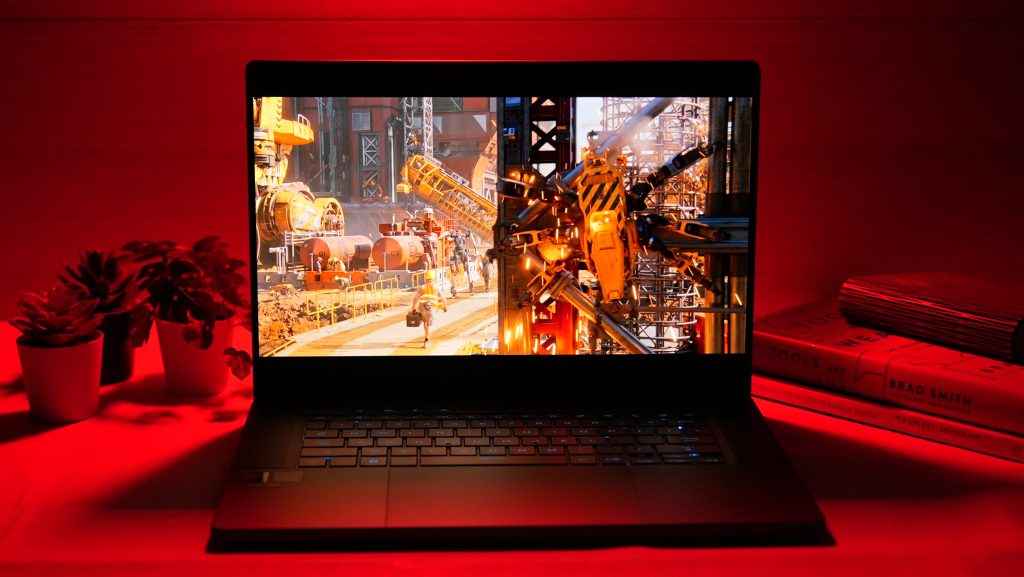


With that, we come to the display. The Zephyrus G16 features a 16-inch 2.5K (QHD+ 2560 x 1600p), OLED panel, with a refresh rate of 240 Hz. This is the first 240 Hz OLED panel from ASUS to offer G-Sync support. It comes with an advertised peak brightness of 400 nits, and 100 percent sRGB and DCI-P3 colour gamut coverage. During our testing, we saw a peak brightness of exactly 400 nits, and 100 percent sRGB and 99 percent DCI-P3 coverage. Excellent scores across the board, however, we would have expected the OLED panel to be brighter. Nevertheless, the visuals are stunning, with vivid colours, and since this is an OLED panel blacks are naturally great, which in turn results in high contrast
ASUS ROG Zephyrus G16 Performance
We know that the Zephyrus G16 comes with top-of-the-line hardware from Intel and NVIDIA, but sacrifices have been made to accommodate all that power into the slim chassis. The new Meteor Lake Intel Core Ultra 9 185H is a great processor, but it’s comparable to the 13th gen Intel Core i9-13900H in terms of performance. Anything above that, including the 13950HX, 13980HX, and 14900HX to name a few, all outperform the Ultra 9 185H. At least in the case of the Zephyrus G16. For reference, we’ve compared the Ultra 9 185H to a 13980HX and a 14900HX in our productivity and processor benchmarks.
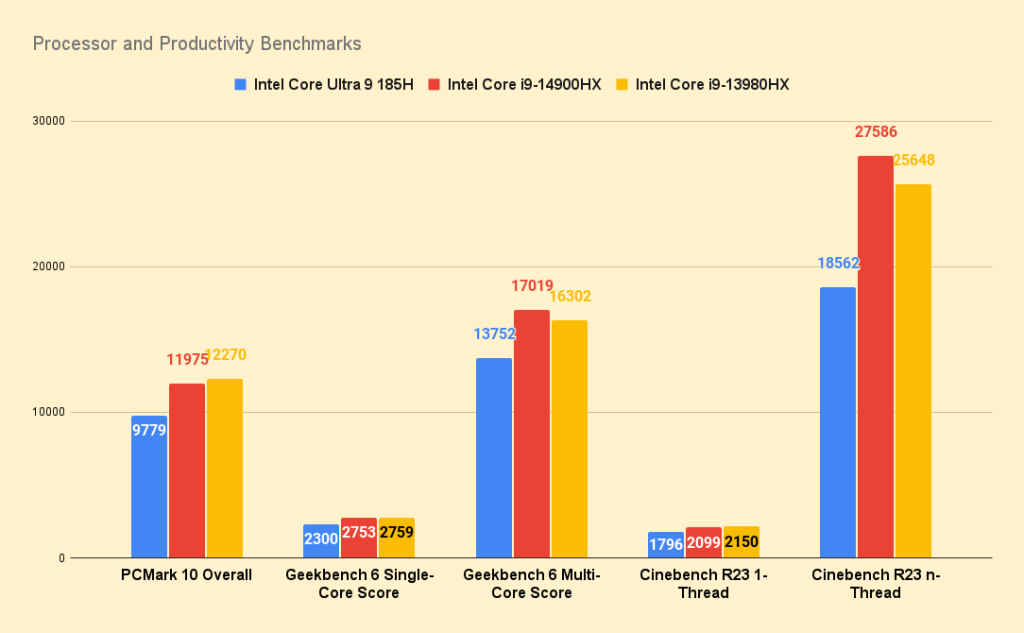
Once again, I’ll point out that these aren’t bad scores, but they do fall pretty short of the other top-end processors present in models around similar price ranges.
Coming to gaming, the Zephyrus G16 comes with an NVIDIA GeForce RTX 4090. However, with a TGP of 125 W, it isn’t as juiced as the 175 W variant RTX 4090s that other similarly priced gaming laptops come with. Also, the laptop needs to be on Turbo mode (set in the Armory Crate software), to fully utilise the GPU TGP. When not in Turbo mode, the GPU TGP is limited even further. This has been done to allow for better battery life. Even a 175 W RTX 4080 outperforms the RTX 4090 on the Zephyrus G16 in some of our benchmarks.
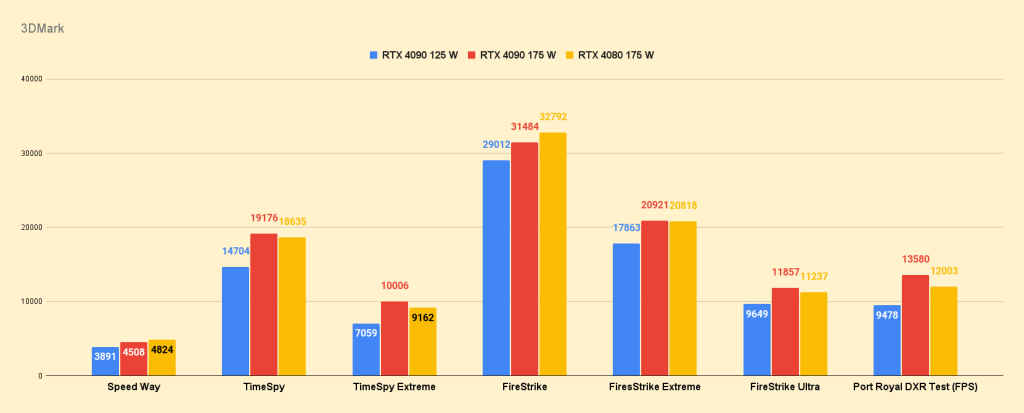
We start with synthetic benchmark scores. Here we can showcase the difference GPU TGP makes when it comes to performance.
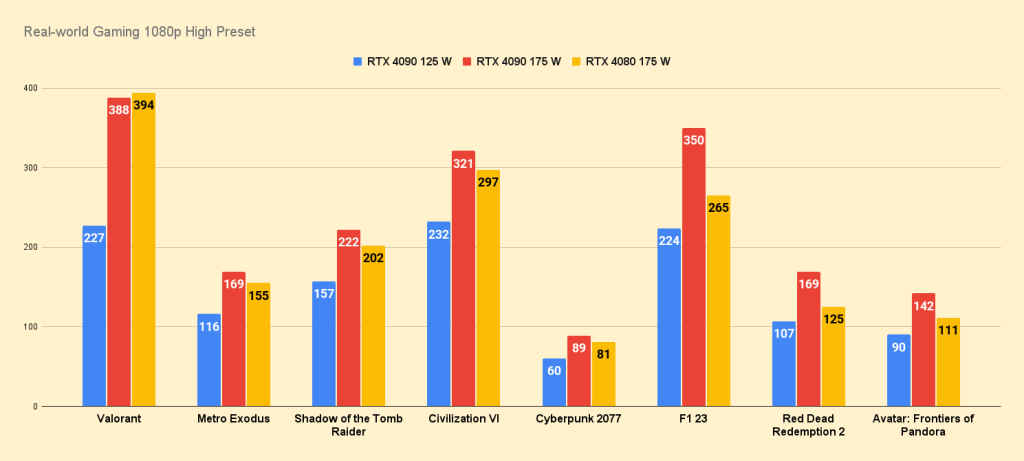
This translates to real-world gaming benchmarks as well, with a sizeable difference in performance numbers. That said, the numbers aren’t bad at all. Only extremely demanding titles will struggle on the Zephyrus G16. The stability and consistency of performance are also pretty good, so you can expect smooth gameplay for long sessions. If you can bear with the rising surface temperatures that is.
Noise and Heat
ASUS offers different cooling solutions for the ASUS ROG Zephyrus G16 depending on the configuration. While the RTX 4050/4060/4070 variants use the conventional heat pipes and three-fan setup, the RTX 4080 and 4090 variants use a dual-fan vapour-chamber module. We noticed that cooling is hindered when the laptop is sitting flush on a desk. Even though two rubber strips are present under the laptop to give it some elevation, the fans are still impeded. Since all of our laptops are tested the same, we chose not to elevate the laptop for our tests, but there is a noticeable change in temperatures when the laptop is elevated; worth keeping in mind if you’re planning on picking the laptop up.
During our stress test, the CPU temps went up to 96 degrees Celsius, which is on the higher side but manageable. GPU temps also were in the 80s, which again, was on the higher side. That said, the laptop still scored well (the best in the price segment so far) in our throttle test despite the above-average temperatures. Surface temperatures were high across the board. The WASD cluster and the centre of the laptop were consistently over the 45 degrees Celsius mark during intensive tasks which is uncomfortably hot. The rest of the laptop surface averages out to around 34-35 degrees Celsius.
ASUS ROG Zephyrus G16 (2024) Verdict
There’s no denying the premium build quality and excellent craftsmanship of the ASUS ROG Zephyrus G16. It has a stunning OLED display and a good selection of ports, all of which are packaged nicely into a super slim and lightweight 16-inch chassis. It’s even more impressive if you consider that it comes with heavy-duty hardware like the Core Ultra 9 and an RTX 4090. Unfortunately, it does come with its own set of flaws. The laptop cannot compete with beefier alternatives in the market when it comes to performance; cheaper laptops with GPUs a tier lower outperform the max-Q RTX 4090 on the Zephyrus G16. The new Meteor-Lake processor also doesn’t seem to offer improved performance over its predecessors. Additionally, the laptop comes with 32 GB of RAM, which is plenty, but it’s soldered on, so there’s no way to increase it in the future. There’s also the issue of high surface temperatures which is fairly common in such thin and light form factor laptops.
While the Zephyrus G16 doesn’t go all-in on performance, it is still a great hybrid option that’s a good mix of performance and portability with a stunning OLED display to boot.
Manish Rajesh
Manish can usually be found fervently playing video games of all kinds or… no wait he’s pretty much always playing games View Full Profile
